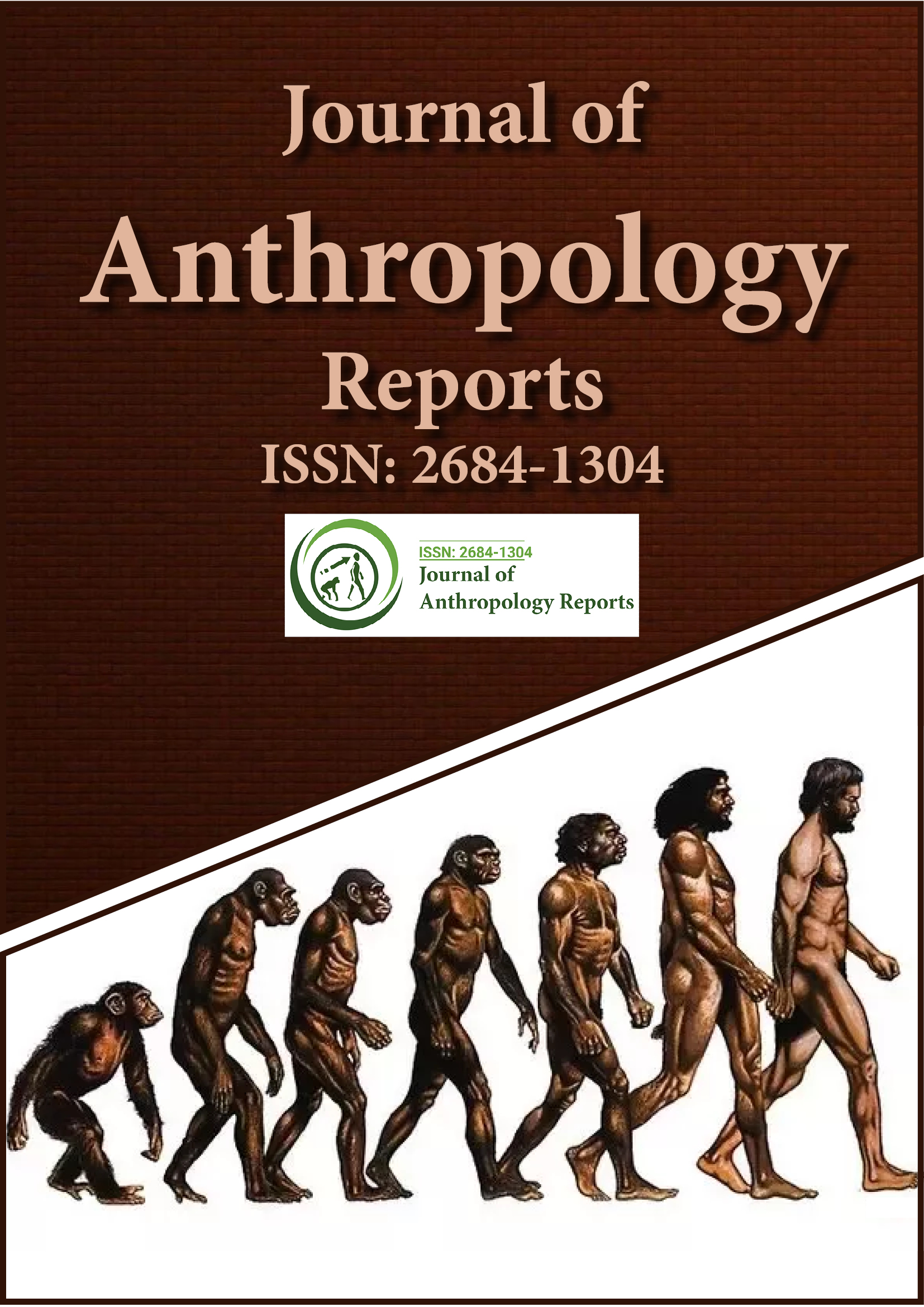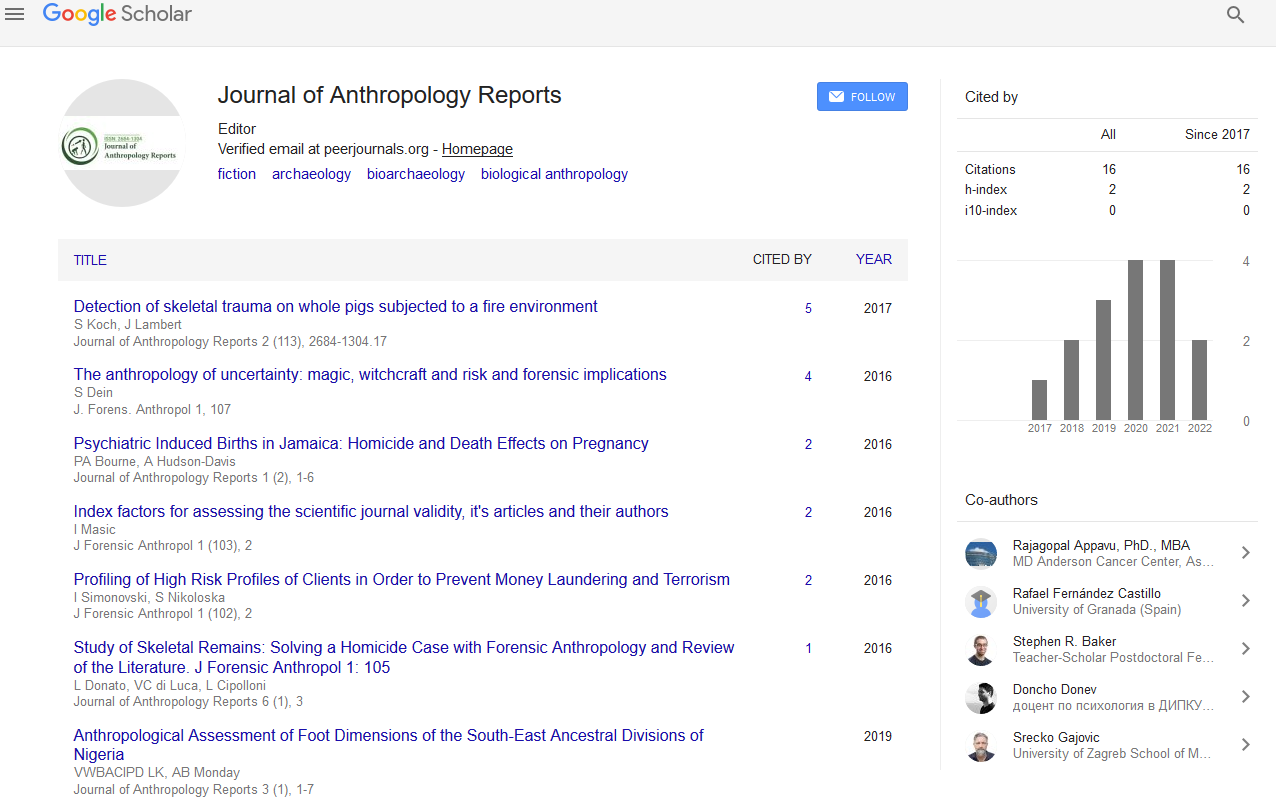Indexed In
- RefSeek
- Hamdard University
- EBSCO A-Z
Useful Links
Share This Page
Journal Flyer

Open Access Journals
- Agri and Aquaculture
- Biochemistry
- Bioinformatics & Systems Biology
- Business & Management
- Chemistry
- Clinical Sciences
- Engineering
- Food & Nutrition
- General Science
- Genetics & Molecular Biology
- Immunology & Microbiology
- Medical Sciences
- Neuroscience & Psychology
- Nursing & Health Care
- Pharmaceutical Sciences
Commentary - (2023) Volume 6, Issue 1
Understanding Structural Vulnerability through Forensic Anthropology
Michael Higgins*Received: 01-Mar-2023, Manuscript No. JFA-23-20634; Editor assigned: 03-Mar-2023, Pre QC No. JFA-23-20634 (PQ); Reviewed: 17-Mar-2023, QC No. JFA-23-20634 (QC); Revised: 24-Mar-2023, Manuscript No. JFA-23-20634 (R); Published: 31-Mar-2023, DOI: 10.35248/2684-1304.23.6.153
Description
Forensic anthropology is a specialized branch of anthropology that involves the analysis of human remains to assist in criminal investigations. In particular, forensic anthropologists often work to identify the cause of death, the manner of death, and the identity of a deceased person. However, forensic anthropology also has an important role to play in understanding the social and economic factors that can lead to structural vulnerability, which can make certain individuals or groups more susceptible to violence, poverty, and other forms of harm.
Structural vulnerability refers to the ways in which social and economic structures can contribute to the marginalization and disenfranchisement of certain individuals or groups.
This can include factors such as poverty, racism and other forms of discrimination. In many cases, structural vulnerability can make individuals or groups more vulnerable to violence, disease, and other forms of harm. Forensic anthropologists are uniquely positioned to contribute to our understanding of structural vulnerability. By analyzing the remains of individuals who have experienced violence or other forms of harm, forensic anthropologists can shed light on the social and economic factors that contributed to their vulnerability. However, there are several challenges associated with forensic anthropological investigations of structural vulnerability.
Challenges in collecting data
One of the primary challenges in forensic anthropological investigations of structural vulnerability is collecting reliable and accurate data. In many cases, individuals who experience violence or other forms of harm may not have been recorded in official records, such as police reports or death certificates. This can make it difficult for forensic anthropologists to gather information about the circumstances of their death or the social and economic factors that contributed to their vulnerability. Additionally, forensic anthropologists may encounter challenges in collecting data from marginalized communities or communities that are distrustful of law enforcement. This can make it difficult to obtain permission to collect data or to gain the cooperation of community members in providing information.
Challenges in interpreting data
Even when data is available, forensic anthropologists may encounter challenges in interpreting it. Social and economic factors that contribute to structural vulnerability can be complex and multifaceted, and may not always be reflected in the physical remains of a deceased individual. As a result, forensic anthropologists may need to rely on other sources of information, such as interviews with family members and community members, to gain a more complete understanding of the circumstances surrounding an individual's death.
Challenges in communicating findings
Finally, forensic anthropologists may encounter challenges in communicating their findings to law enforcement and other stakeholders. In many cases, law enforcement may not be familiar with the concept of structural vulnerability or may not understand the implications of forensic anthropological findings for addressing these issues. Additionally, forensic anthropologists may need to communicate their findings to a broader audience, such as policymakers or the general public, in order to promote broader awareness of the social and economic factors that contribute to structural vulnerability. Addressing these challenges will be critical for advancing our understanding of structural vulnerability and improving our ability to prevent violence and other forms of harm. To do so, forensic anthropologists will need to work closely with communities and other stakeholders to collect reliable data, interpret it accurately, and communicate their findings effectively. Additionally, forensic anthropologists will need to collaborate with other experts, such as public health professionals and policymakers, to develop interventions that address the underlying social and economic factors that contribute to structural vulnerability.
Citation: Higgins M (2023) Understanding Structural Vulnerability through Forensic Anthropology. J Anthropol Rep. 6:153.
Copyright: © 2023 Higgins M. This is an open-access article distributed under the terms of the Creative Commons Attribution License, which permits unrestricted use, distribution, and reproduction in any medium, provided the original author and source are credited.

